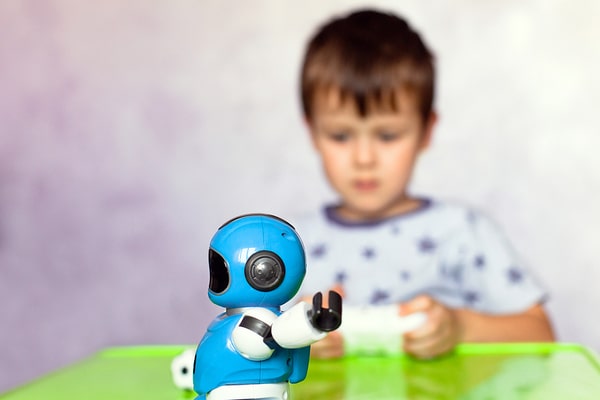Back when many parents were kids, the smartest toys they got were beeping or moving to a song. These days, however, there are fantastically complex devices designed to do everything from reading moods to connect to the internet to play games and update software. But when is a smart toy too smart? And when should they be subject to parental control apps?
Here are three key questions you need to consider.
How Does the Toy Function?
First, explore how the toys function. Some smart toys simply have complex onboard electronics or other items and operate that way. Others will connect to the internet directly, or will need to be configured by an external device before being used, but that will be the end of it. And still, others are intimately connected to an app run on a tablet or phone.
Each of these introduces potential concerns. For example, if a toy only works with an included app, you should check the permissions on that app. What data does the app collect? Is the app designed for an adult to work the toy “behind the scenes,” or is a child directly engaged by a screen? Keep in mind some functions may also fall afoul of a parental control app’s filters.
What Information Is Gathered?
Smart toys may require you or your child to sign into a website, fill out a product registration card, or otherwise turn over personal information. This can be subtle. For example, have you ever told a game what month you were born in to get free in-game items? Or do you have to upload a profile picture?

Remember that information can be passively gathered, also. If a toy connects to the internet, it will likely gather data like IP address, time of connection, router information, and internet service provider as a matter of course. Unless explicitly blocked by parental control apps or safety software, that information can be used to uncover a surprising amount of personal information.
Finally, be wary of subscriptions or in-app purchases. Those require not just your internet information, but credit card data as well.
What’s Built Into the Toy?
One of the big problems with smart devices, in general, is unnecessary features added simply because they put another bullet on a marketing sheet. Cameras, GPS locators, and other potential safety risks could be thrown into toys. If they are enabled, ask who’s on the other end, and what they’re doing with the information they may gather.
Manufacturers should provide policy documents on their website, and be in compliance with all relevant laws, such as the Child Online Privacy Protection Act (COPPA) in the US, and the General Data Protection Regulation (GDPR) in the EU. They should also not interfere with the operation of parental control apps or ask for exceptions to these apps.
There’s no way to protect your family from the entire world. But you can develop rules and approaches to put it more on your terms. To learn more, try Screentime for free!


Join the conversation